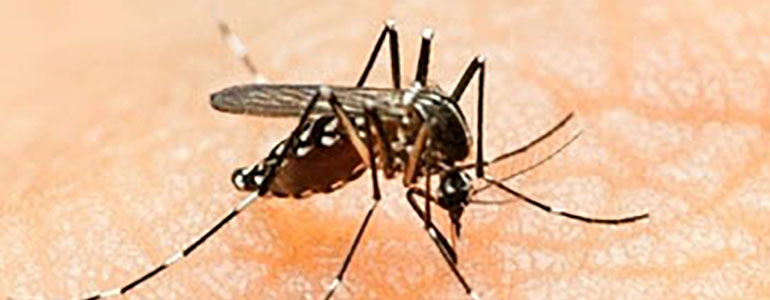The recent attention to the Zika virus and its potential global spread illustrates once again that the truly important questions occur at the systems level. Without systems thinking the questions can “hide” from decision makers emerging only later as damaging unintended consequences of decisions made without an adequate systems understanding.
The Zika virus has grabbed the headlines as it makes the transition from an obscure tropical disease to a global public health problem. Discovered in the Zika Forest in Uganda in 1947, the virus is transmitted by the Aedes Aegypti (a. aegypti) mosquito. It has since spread from Sub-Saharan Africa to South America. For many years the deceptively mild obvious symptoms of the virus masked its deadly behind-the-scenes role as a purveyor of birth defects such as microcephaly and immune system disorders such as Guillain-Barre Syndrome. Recently the link has been made, and Zika has been recognized as a potentially dangerous threat, particularly for pregnant women.
The virus is transmitted from human to human when the female (and only females bite humans) a. aegypti mosquito bites an infected human and picks up the virus. From there the mosquito deposits the virus in each human host that she bites for the remainder of her two-week lifespan. As the number of infected humans grows, the number of mosquito carriers increases and the virus outbreak is assured.
With the 2016 Summer Olympics set take place this August in Rio de Janeiro, the problem takes on an elevated profile. Global travelers are projected to approach five hundred thousand, and the potential for spreading the virus from Brazil to other areas of the world could be quite high. Where the infected traveler returns to an area populated with the a. aegypti mosquito, the potential for a mosquito to bite the infected person and then spread the virus to others is created. Fearful of infection, some athletes are calling for a postponement or relocation of the games.
Because Zika is one of a number of mosquito-borne diseases that include Malaria, West-Nile Virus, dengue fever, and chikungunya, a good deal of attention has already been dedicated to preventing viruses and eradicating their vectors. The traditional vaccine and drug therapy approaches carry the problem of time – research time to find the drugs and then the approval time to clear them for use. In a race against a rapidly spreading disease, vaccines and drugs can easily fall too far behind the virus.
In the U.S., the a. aegypti mosquito ranges from the Gulf coast and Florida north as far as Kansas City and New York City. The cities of Houston, Miami, Orlando, Atlanta, and New York are all expected to receive hundreds of thousands of travelers from countries on the CDC Zika travel alert. This means that a significant supply of potential virus carriers will meet a mosquito vector population in the southern U.S. this summer. All of that mitigates against a vaccine/drug therapy solution as an answer to the impending viral spread.
The other traditional approach targets population reduction among mosquitos through the use of insecticides. This is effective but has drawbacks which become apparent in a systems view. It shares some of the same implementation time problems as vaccine and drug therapy because insecticides must be developed and approved for use. Then, an insecticide loses its effectiveness over time as mosquitos develop a resistance. In addition, there are environmental concerns with unintended consequences like the eggshell weakening among bald eagles resulting from the increased use of DDT. While the insecticide effectively kills its target, it also harms other species – perhaps including humans.
A more promising set of answers has arisen in the form of genetic modification. Using a genetic engineering technique referred to as “gene drive” the mosquito genes can be modified so that instead of passing the new traits to half of its offspring the “aggressive” gene is transmitted to 99% of the new mosquitos. This is particularly powerful when the genes being “driven” into the offspring population prevent the mosquitos from spreading the disease, reduce the mosquito population, or both.
Among the solutions under development is a gene modification that causes genetically modified males to father only male offspring. This gradually reduces the number of females in the population until they disappear. Because only the females bite humans this reduces and eliminates the transmission of disease.
Another modification transmits a gene that cause offspring to die before beginning their biting cycle. A third produces offspring whose bodies attack the disease-bearing parasites that might enter their bodies, eliminating the disease from their bite.
But there are serious systems-level questions raised by these techniques. By eliminating the female mosquitos from a population, the population itself is ultimately completely eliminated. Likewise, propagating a genetic modification that causes the females to die before their biting cycle (and thereby their offspring production) will cause the population to become extinct through the lack of successor generations.
Solutions through extinction raise a number of systems questions. What species (birds, bats, frogs, lizards, etc.) depend on the targeted mosquitos as a food source? How can we be sure that the genetic modification won’t “jump” the target species (to other mosquitos or other insects) thereby impacting those populations as well? What plants depend upon the target species for pollination? These and other consequence-related questions require thinking at the systems level.
As in other arenas, it is ultimately the systems questions that matter most. Without answers to the consequential questions, it is impossible to weigh the cost-benefit factors. In seeking a solution, we must weigh the consequences of the impacts on an insect population (and the ecological system) against the potential savings in terms of the reduction in human mortality and suffering. Trained systems thinkers are critical to that decision process. Again we see the truly important questions live at the systems level.






